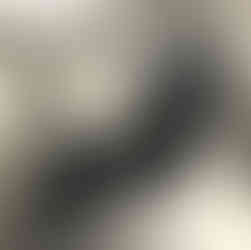Le Chevalier du Ciel
- spacemonkeymodels

- Aug 13, 2019
- 3 min read
Today I review the Mirage 2000C by Italeri and see if it’s as magnifique as it seems.

Subject: Dassault Mirage 2000C
Brand: Italeri
Rating: 2/5
The Kit

As with many other jets, the Mirage parts are divided into two main sprues and one smaller clear sprue which holds the cockpit parts. One of these sprues is made up largely of the aircraft’s armaments, with which the kit offers two main loadouts - unfortunately, the kit does not offer the option to have a properly clean loadout as the underside of the aircraft is filled with slits designed to be joined with the hardpoints; but this is always fixable through some sanding work. In addition to this, for what seems to be an unusual but welcomed difference for this kit is how the panel lines are recessed and not raised.
The kit provides decals for three liveries, all of which are derived from aircraft involved in the Gulf War - this is because the boxing of the kit is a special Gulf War anniversary set. Two of these liveries are for French aircraft, and one is for a Mirage under United Arab Emirates Air Force service.
The Build
To be frank, this build was not the most pleasant experience. I found the cockpit fitting to be rather imperfect, but not frustrating - the sides of the seat didn’t seem to want to make a proper fit to the main seat section, but with some force I managed to get them together. Even from the beginning I found the instructions to be unclear on exactly which piece went where, an issue I faced throughout the build.

That being said, the construction of the main airframe proved itself to be fairly smooth. Fitting continued to be rather poor, with many joints creating gaps too large to simply be sanded down - and a lot of filler was applied to said joints once the pieces had dried properly. On the plus side, I found the undercarriage pieces came together very smoothly and without hassle - though the gear doors didn’t seem to fit very well and required several attempts to be held in place properly, and the same could be said for the refuelling probe. Here the instruction booklet’s lack of clarity shined once again, and I’m still not certain as to whether the refuelling probe is in the right place or not.

Despite these issues, the main airframe of the model was complete and ready for painting. I decided to primarily use Citadel paints for this aircraft, just like the Flanker - for the lighter camouflage tone and the underside I used Blue Horror and for the darker tone I used Fenrisian Grey, as well as Administratum Grey for the nose. For smaller details I used Abbadon Black and Tamiya’s Metallic Grey (XF-56).

With painting now complete, I could move on to decals. These proved to be the most stressful part of the build - I’ve noticed that Italeri’s instructions for decal placement have been rather poor when compared the kit itself, and it really showed in this build. Many of the decals seem to be incorrectly sized which creates several problems - the stencil decals particularly suffer from these issues, and some of the decals shown in the booklet aren’t even present on the sheet! Thankfully, the important decals were all there and I managed to get them applied without any real issue, but I’ll admit there are many smaller stencils that I lost the motivation to apply to the model.
Once I’d allowed the decals to settle I gave the model a quick, subtle wash with Citadel Nuln Oil, aimed to be more concentrated around the back of the wings and the engine exhaust area.

I aimed to make the underside the dirtiest part of the airframe.
Conclusion

Overall, I wasn’t overly impressed with this kit. Similar to the Buchón, it’s not a terrible model to build but it’s not great either. On the plus side, the kit features recessed panel lines and general ease of assembly, but it suffers when it comes to poor fitting and, above all, unclear instructions.
This can be added to the fact that the model itself isn’t an entirely accurate replica of the Mirage 2000C - the most noticeable issue being that the real airframe seems to have a wider wingspan - in fact, the kit seems to use wings from the older Mirage variant, the Mirage III.
Despite this, the finished build resembles a 2000C variant closely enough to me so I’m happy to have it on my shelf, at least. Apart from Heller’s rendition (which seems to have a more accurate wingspan), this appears to be the only 1/72 scale Mirage 2000C model on the market, but I’d only go for it if you’re a big Mirage fan like myself.









Comments